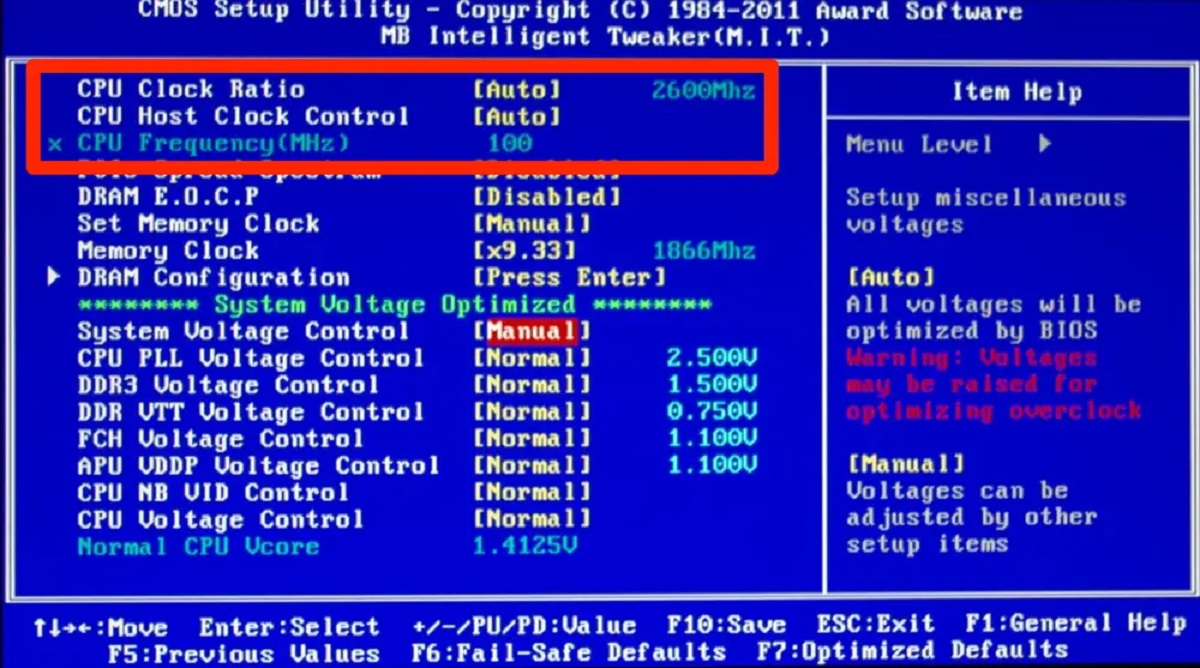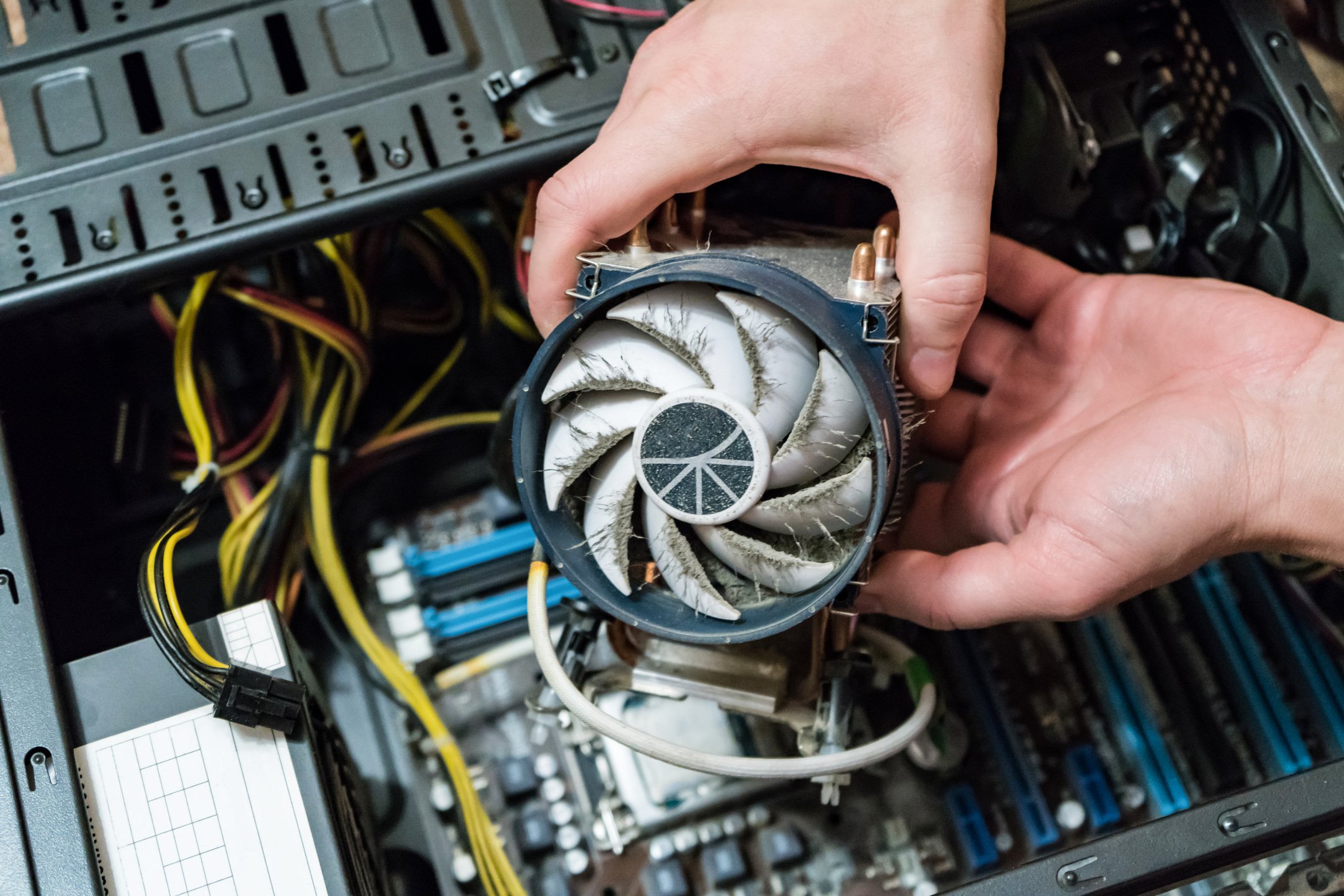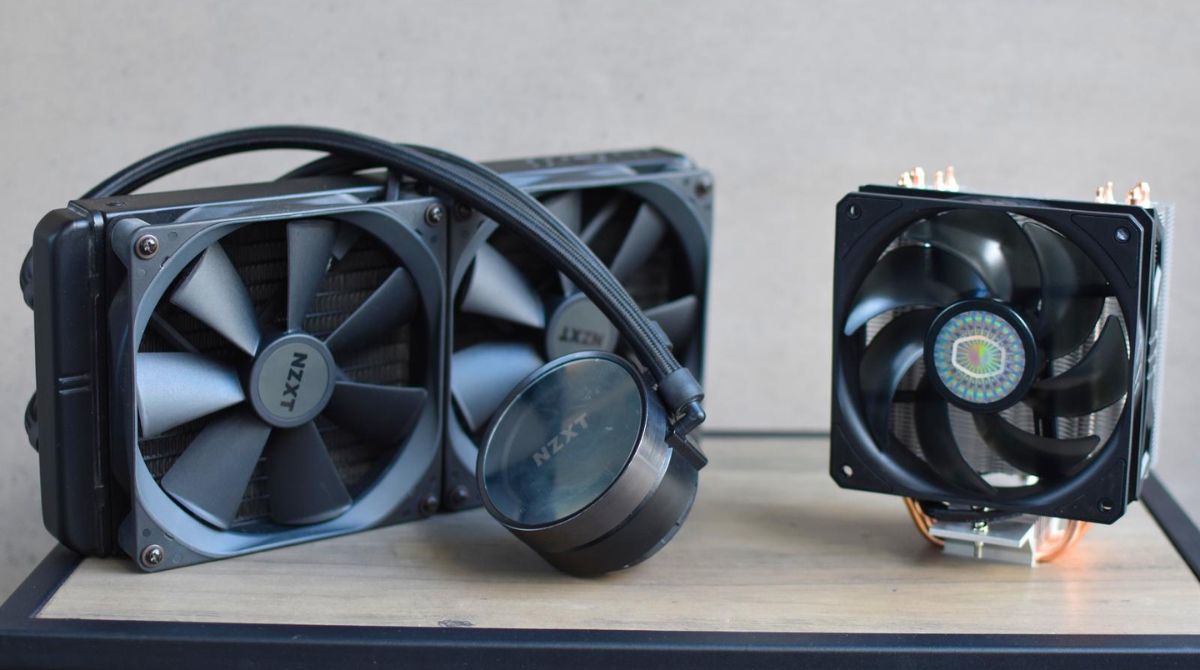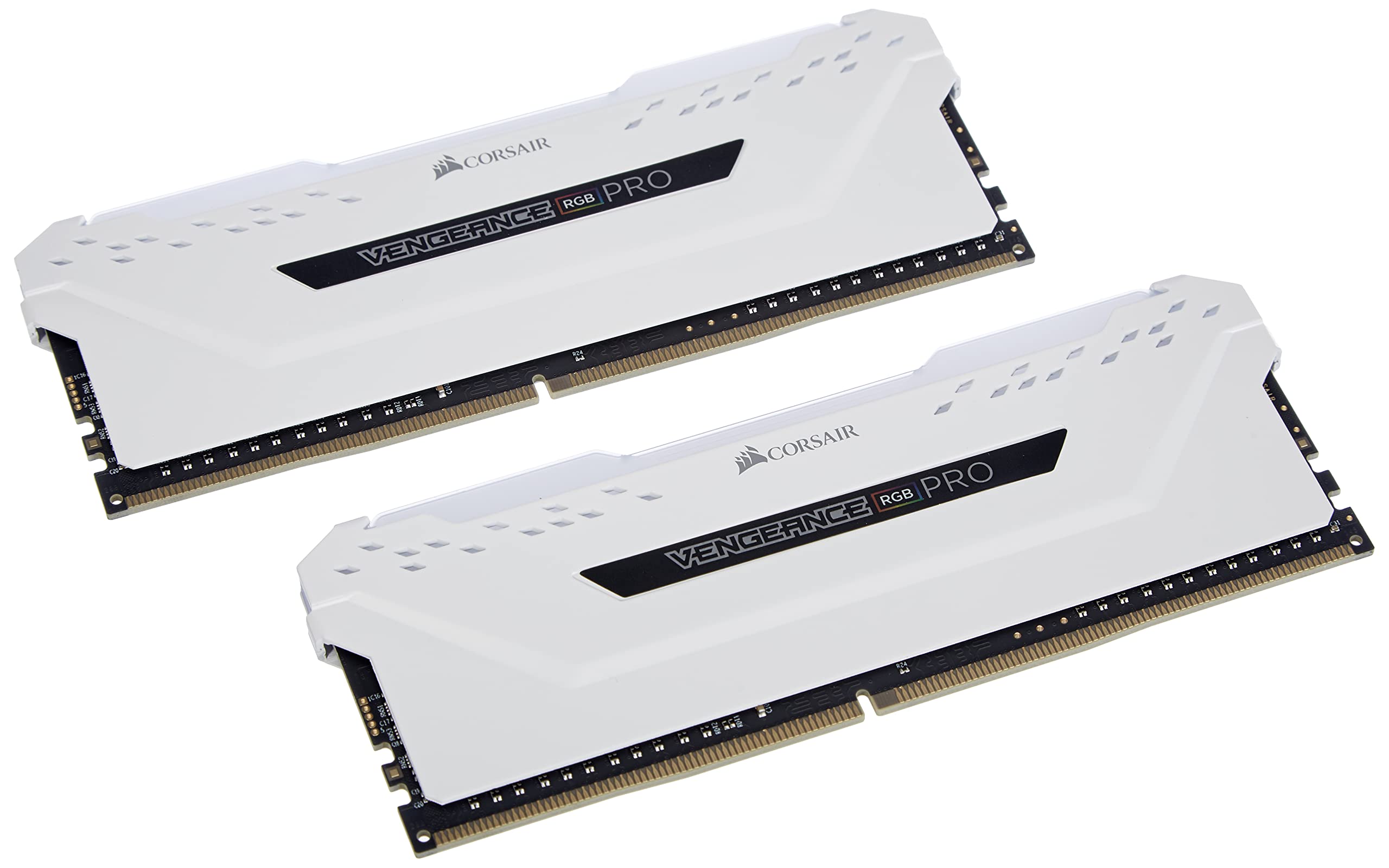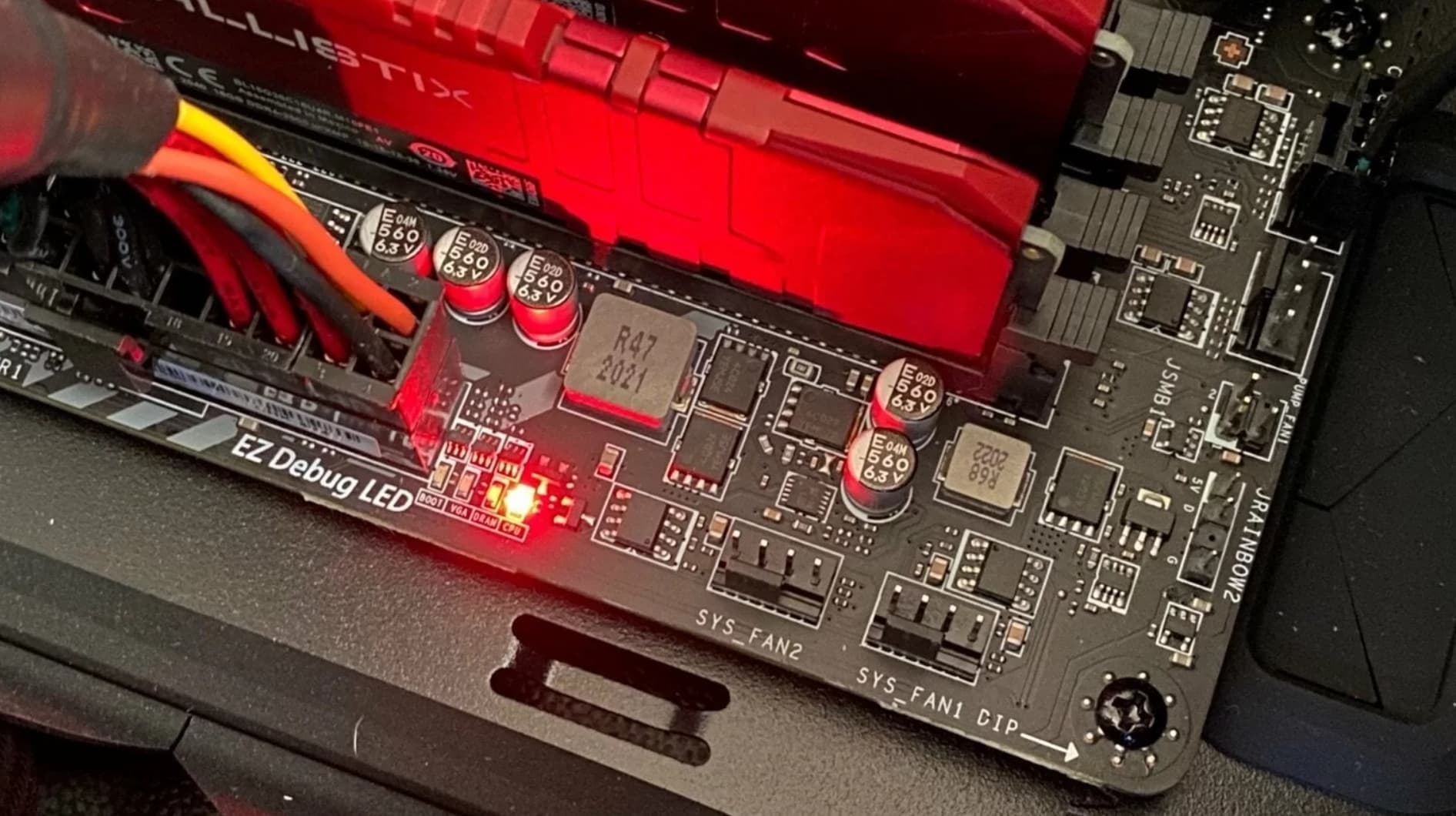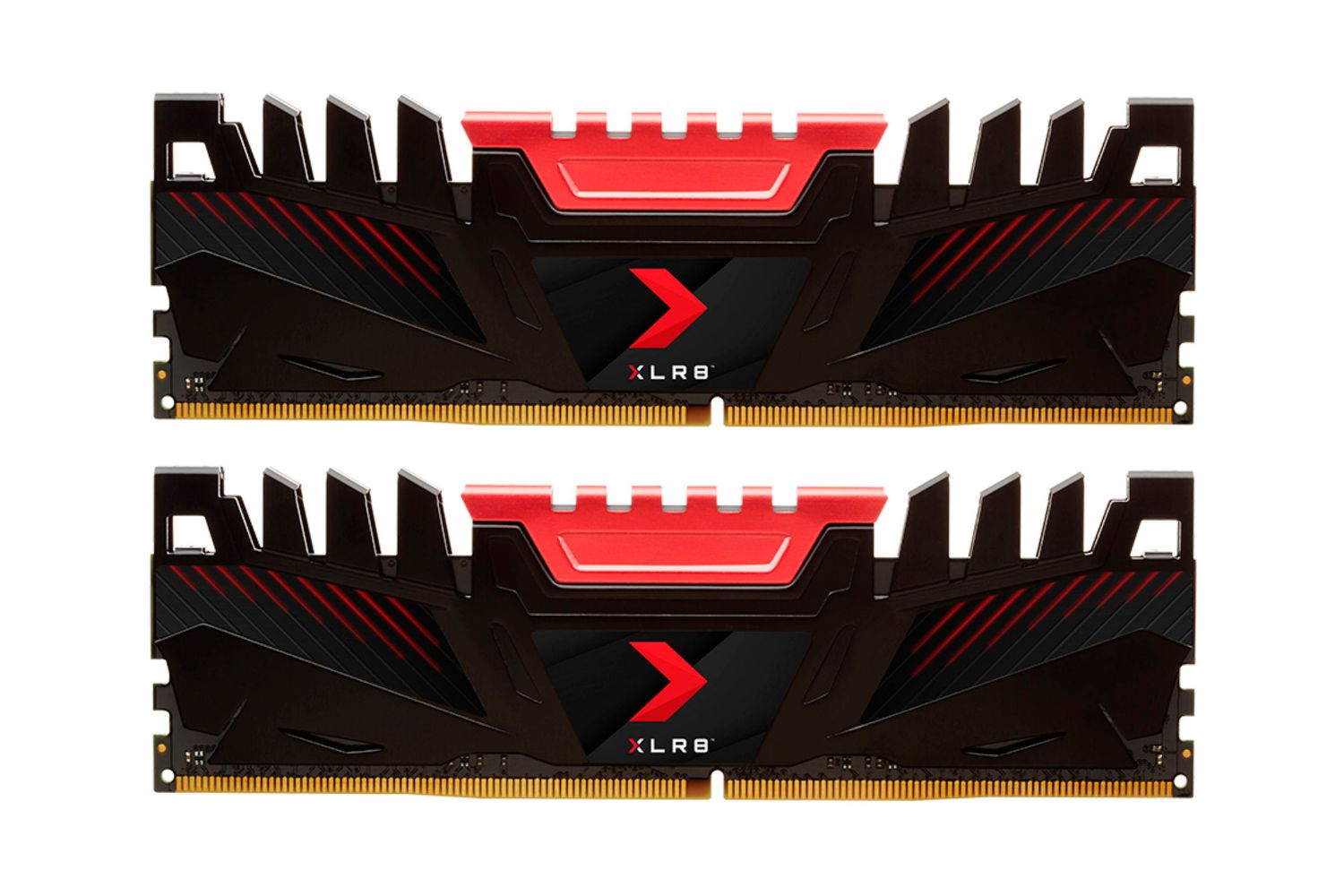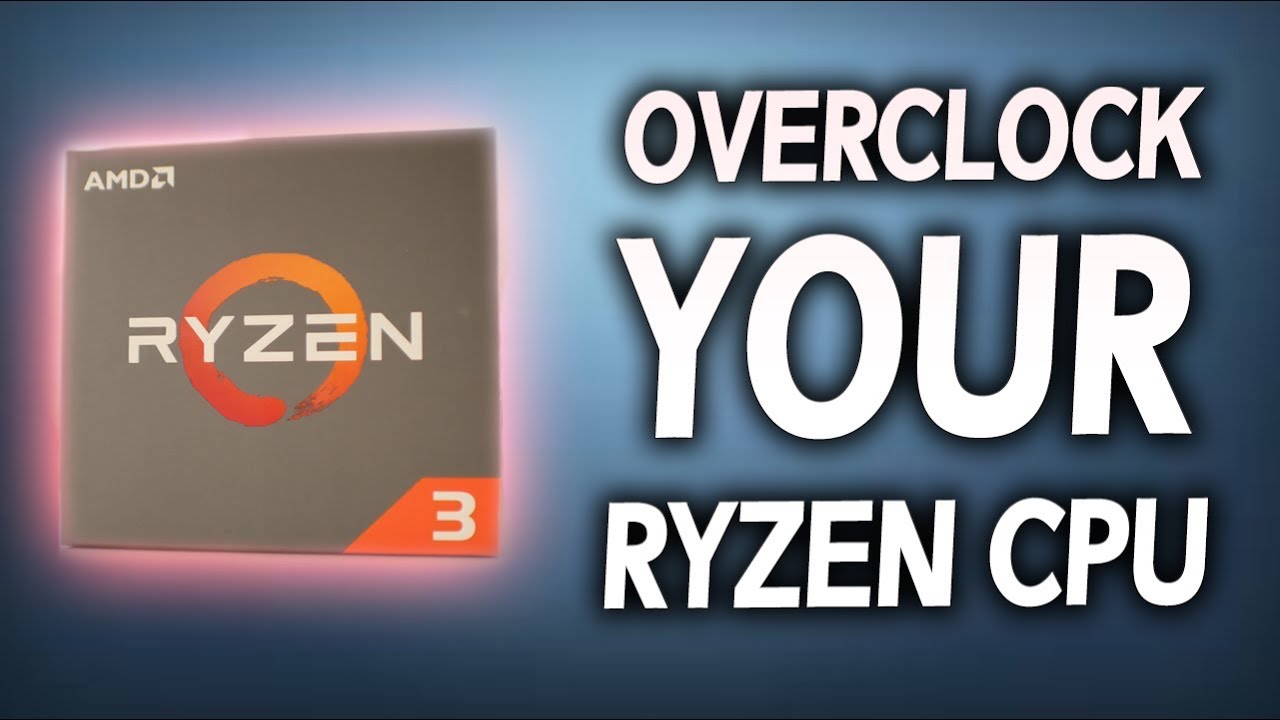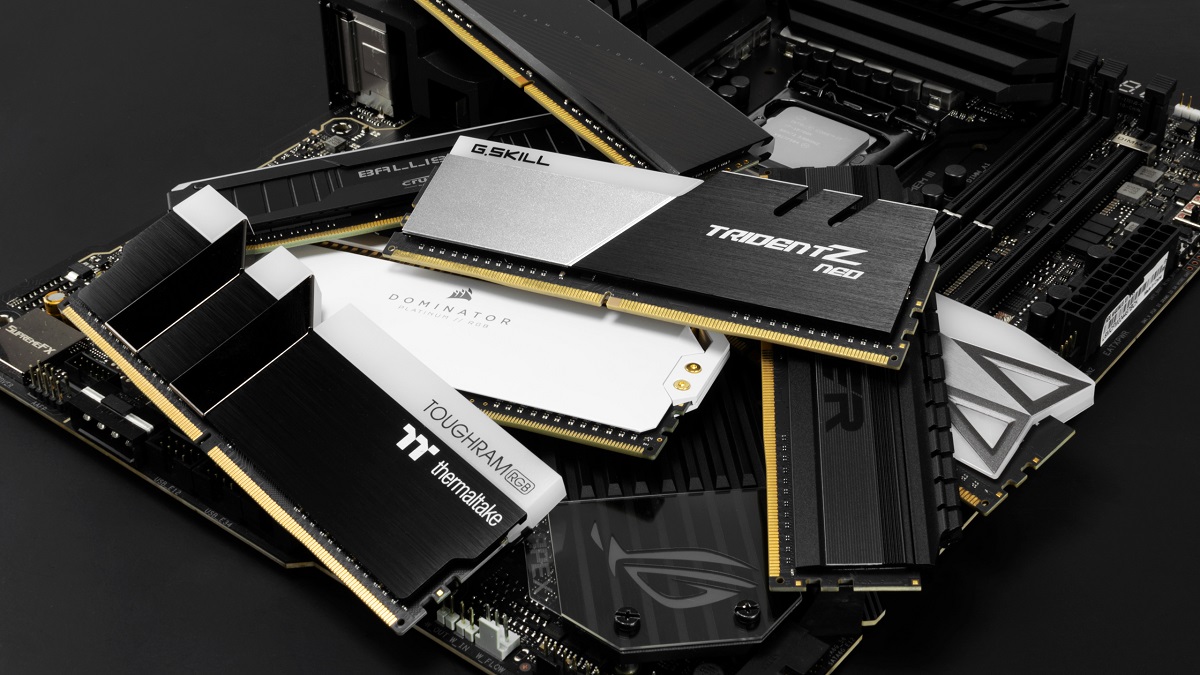Introduction
Overclocking is a term familiar to many PC enthusiasts and gamers, but what does it really mean? In simple terms, overclocking refers to the process of increasing the clock speed of a computer’s components, such as the CPU (Central Processing Unit) or the GPU (Graphics Processing Unit), beyond the factory set limits. By doing so, users can potentially unlock higher performance and improve the overall gaming and computing experience.
Overclocking has gained popularity in recent years due to its ability to squeeze out every ounce of performance from a PC. It allows users to push their hardware to its limits and obtain faster processing speeds, smoother gameplay, and quicker loading times. However, it’s essential to understand the intricacies and risks associated with overclocking before diving into the process.
While overclocking can offer numerous benefits, it is not without its drawbacks. Increased power consumption, higher temperatures, and potential instability are some of the risks that come with pushing hardware beyond its intended capabilities. Additionally, improperly overclocking can void warranties and potentially damage components if not done correctly.
Despite the risks, many PC users are drawn to overclocking because of the performance gains it can unlock. Whether you’re a hardcore gamer seeking those extra frames per second or a content creator looking for faster rendering times, overclocking can be a viable option to maximize your PC’s potential and enhance its capabilities.
In this article, we will explore the various aspects of overclocking, including the benefits, risks, methods, and considerations. We will also provide a step-by-step guide on how to overclock a PC and recommended tools for the process. Whether you’re new to overclocking or looking to delve deeper into the subject, this article will serve as a comprehensive resource to help you understand and harness the power of overclocking for your PC.
Understanding Overclocking
Before diving into the world of overclocking, it’s important to have a basic understanding of how it works. At its core, overclocking involves increasing the clock speed of a computer’s components to achieve higher performance than the manufacturer’s specified limits.
Every computer component, such as the CPU or GPU, operates at a base clock speed determined by the manufacturer. This base clock speed is set to ensure stability and reliability under normal operating conditions. However, these components often have the potential to operate at higher speeds, which can result in increased performance.
Overclocking allows users to tap into the hidden potential of their hardware by pushing it beyond the factory-defined limits. By increasing the clock speed, the component can execute instructions at a faster rate, resulting in improved performance in tasks that require intensive processing power, such as gaming or video editing.
However, it’s crucial to note that not all components are overclockable. It primarily depends on the specific hardware you have. For example, most CPUs and GPUs designed for enthusiasts and gamers are unlocked, meaning they have unlocked multipliers and voltage controls, making them ideal for overclocking. On the other hand, lower-end or budget components may have limited or no overclocking capabilities.
Overclocking is not limited to just CPUs and GPUs. Other components like RAM (Random Access Memory), storage devices, and even the monitor’s refresh rate can also be overclocked to improve system performance. However, it’s important to check the specific hardware specifications and ensure that it supports overclocking before attempting any changes.
It’s important to understand that overclocking can have an impact on the overall stability of the system. Pushing the hardware beyond its intended limits can result in increased heat generation, which can lead to higher temperatures. This, in turn, may require additional cooling solutions, such as high-performance CPU coolers or extra case fans, to maintain optimal temperatures and prevent system instability.
In summary, overclocking is the process of increasing the clock speed of computer components beyond the manufacturer’s specified limits. It allows users to tap into the hidden potential of their hardware and achieve higher performance in various tasks. However, it’s essential to understand the overclocking capabilities of your specific hardware and take necessary precautions to ensure system stability and longevity.
Benefits of Overclocking
Overclocking offers several benefits that make it an attractive option for PC enthusiasts and gamers who are looking to squeeze out every bit of performance from their hardware. Let’s explore some of the key advantages of overclocking:
- Increased Performance: The primary benefit of overclocking is the potential for increased performance. By overclocking your CPU or GPU, you can achieve higher clock speeds, which results in faster processing and improved overall system performance. This can lead to smoother gameplay, quicker rendering times, and reduced loading times for applications and games.
- Cost-Effective Upgrade: Overclocking can be a cost-effective alternative to purchasing expensive new hardware. By overclocking your existing components, you can achieve performance gains comparable to or even better than what you would get by investing in new, higher-end hardware. This allows you to extend the lifespan of your current system without breaking the bank.
- Customization and Optimization: Overclocking allows users to have greater control over their hardware. You can fine-tune various parameters such as voltage, clock speed, and memory timings to optimize your system for specific tasks or applications. This level of customization offers a more tailored experience, ensuring your system performs at its best in the activities that matter most to you.
- Competitive Advantage in Gaming: For gamers, overclocking can provide a competitive edge. By overclocking your CPU and GPU, you can achieve higher frame rates, smoother gameplay, and reduced input lag, giving you a noticeable advantage in multiplayer games and intense gaming scenarios. Additionally, overclocking can help future-proof your system by keeping up with the demanding hardware requirements of newer games.
- Improved Productivity for Content Creation: Overclocking is not just limited to gaming. Content creators and professionals who work with resource-intensive applications such as video editing or 3D rendering can benefit from overclocking. The increased processing power and faster rendering times can significantly improve productivity, allowing for faster project completion and more efficient workflow.
It’s worth noting that the extent of the performance gains achieved through overclocking can vary depending on the specific hardware, cooling solutions, and user expertise. The benefits mentioned above can be significant, but they are also contingent on proper implementation and a thorough understanding of the overclocking process.
Overall, overclocking provides a range of benefits that can enhance your PC’s performance, whether for gaming or productivity tasks. However, it’s crucial to weigh these advantages against the potential risks and consider your specific hardware capabilities and cooling solutions before embarking on the overclocking journey.
Risks and Limitations of Overclocking
While overclocking can provide significant performance gains, it’s important to understand the risks and limitations associated with this practice. Here are some key points to consider:
- Increased Power Consumption: Overclocking causes the CPU and GPU to operate at higher clock speeds, resulting in increased power consumption. This can lead to higher electricity bills and put additional stress on the power supply unit (PSU). It’s essential to ensure that your system’s power supply can handle the increased energy demands to avoid stability issues and potential damage.
- Heat Generation and Temperature Increase: Overclocking leads to higher heat generation as components operate at higher clock speeds. This can result in increased temperatures, which can negatively impact system performance and stability. To mitigate this, adequate cooling is crucial. High-performance CPU coolers, efficient case fans, and proper airflow are necessary to maintain optimal operating temperatures and prevent thermal throttling or even hardware damage.
- Reduced Component Lifespan: Overclocking pushes hardware beyond their factory-defined limits, which can lead to a reduced lifespan of the components. The increased voltage and heat generated during overclocking can degrade the hardware over time. It’s important to monitor temperatures, voltage levels, and conduct regular stability tests to identify any potential issues and ensure the longevity of your system.
- System Instability: Overclocking can introduce system instability if not done correctly. Pushing components beyond their capabilities without adequate testing and stability checks can result in crashes, blue screens, or unexpected shutdowns. It’s important to stress-test your system after overclocking to ensure its stability and reliability. Monitoring software and benchmarking tools can help you identify any instabilities and fine-tune your settings for optimal performance.
- Potential Component Damage and Voided Warranties: Overclocking done incorrectly or with excessive voltages can potentially damage your hardware. It’s crucial to be aware of and adhere to the safe voltage limits specified by the manufacturers to avoid irreversible damage. Additionally, it’s important to note that overclocking can void warranties, as manufacturers typically do not cover damages caused by overclocking. Careful consideration and understanding of your specific hardware and manufacturer’s policies are necessary before proceeding with any overclocking attempts.
It’s essential to approach overclocking with caution and take appropriate measures to mitigate the associated risks. This includes proper monitoring of temperatures, testing stability, and being aware of the limits and specifications of your hardware. Additionally, acquiring knowledge and expertise in overclocking techniques and best practices can help minimize potential risks.
Understanding the risks and limitations of overclocking allows you to make informed decisions and weigh the potential gains against the potential drawbacks. With responsible overclocking practices and proper hardware monitoring, you can enjoy the benefits of increased performance while ensuring the long-term reliability and stability of your system.
Different Methods of Overclocking
Overclocking can be achieved using different methods, each with its own advantages and considerations. Let’s explore some common methods of overclocking:
- BIOS/UEFI Overclocking: BIOS or UEFI (Unified Extensible Firmware Interface) overclocking is the traditional and most common method. It involves accessing and modifying the settings in the system’s BIOS or UEFI interface. Users can adjust variables such as the CPU multiplier, voltage, and memory timings to achieve higher clock speeds. This method provides more control over various parameters but requires careful consideration and a thorough understanding of the BIOS/UEFI settings to avoid instability and potential damage.
- Software Overclocking: Software overclocking utilizes third-party overclocking software applications to adjust clock speeds and other settings directly from the operating system. These software tools often provide an intuitive graphical user interface (GUI) that simplifies the overclocking process and allows for real-time monitoring and adjustment. Software overclocking can be a suitable option for beginners or users who prefer a more user-friendly approach but may have limited options compared to BIOS/UEFI overclocking.
- Factory Overclocking: Some manufacturers offer factory overclocked versions of their hardware components. These pre-overclocked components come with higher frequencies and performance out of the box. This method provides a convenient option for users who want the benefits of overclocking without the need to manually modify settings. However, factory overclocked components may come at a higher cost compared to their stock counterparts.
- Automatic Overclocking: Automatic overclocking, also known as “auto-tuning” or “one-click overclocking,” is offered by certain motherboard manufacturers. This feature automatically detects the capabilities of the CPU and adjusts the clock speeds and voltages accordingly to achieve optimal performance. While this method is convenient, it may not provide the same level of customization as manual overclocking, and the results can vary depending on the quality of the automatic tuning algorithms.
No matter which method you choose, it’s crucial to proceed with caution and gradually increase clock speeds while monitoring system stability and temperatures. Stress-testing the system is key to ensure its reliability and identify any potential instabilities resulting from the overclocking process.
It’s worth noting that not all components can be overclocked to the same extent. Factors such as the hardware’s quality, cooling solutions, and the silicon lottery (the natural variation in capabilities between individual chips) can impact the overclocking potential. It’s important to manage expectations and understand that not all components will achieve extreme overclocks.
Ultimately, the method of overclocking you choose will depend on your expertise, comfort level, and specific hardware configuration. Whichever method you opt for, be sure to research and follow manufacturer guidelines, consult reputable sources, and take adequate precautions to ensure a successful and stable overclocking experience.
Factors to Consider Before Overclocking
Before embarking on the overclocking journey, there are several crucial factors to consider to ensure a successful and safe overclocking experience. Let’s delve into the key considerations:
- Hardware Capabilities: Not all hardware components are created equal when it comes to overclocking. It’s essential to research and understand the overclocking capabilities of your specific CPU, GPU, RAM, and motherboard. Some components are designed with better power delivery systems, higher-quality components, or unlocked features, making them more suitable for overclocking. Checking manufacturer documentation, user forums, and professional reviews can provide valuable insights into the overclocking potential of your hardware.
- Cooling Solutions: Overclocking generates more heat, which can lead to higher temperatures and potential instability. Proper cooling solutions are critical to maintain optimal temperatures and ensure system reliability. Investing in robust CPU coolers, efficient case fans, and quality thermal paste can help dissipate heat effectively. Evaluating your current cooling setup and considering potential upgrades is essential before embarking on overclocking.
- Power Supply Unit (PSU): Overclocking can increase power consumption, especially when adjusting voltages and clock speeds. It’s crucial to ensure that your power supply can handle the increased energy demands. A high-quality PSU with sufficient wattage and stable power output is necessary to avoid stressing the components and potential system instability. Consider checking the manufacturer’s specifications and opting for a reputable PSU to support your overclocking endeavors.
- System Stability Testing: Stability testing is a crucial step in the overclocking process. Running stress tests such as Prime95, AIDA64, or FurMark can gauge the stability of your system under heavy loads and determine if the overclock is stable. It’s important to monitor temperatures, voltages, and system performance during stress testing to identify any instabilities or excessive heat. Achieving a stable overclock requires patience and iterative adjustments to find the optimal settings without compromising system reliability.
- Warranty Void: It’s important to note that overclocking can void warranties, as it involves pushing hardware beyond the manufacturer’s specified limits. Before overclocking, understand the potential implications on warranty coverage and carefully consider the trade-off between performance gains and potential risk. Some manufacturers offer special overclocking warranties or specific models designed for overclocking, so it’s advisable to explore available options if warranty coverage is a concern.
- Knowledge and Experience: Overclocking requires a certain level of knowledge and expertise. Familiarize yourself with various overclocking techniques, terminology, and safety precautions. Research reputable sources, consult forums, and seek guidance from experienced overclockers to gain insights and avoid common pitfalls. It’s important to approach overclocking with a willingness to learn, patience, and a methodical approach to achieve the desired results.
By carefully considering these factors, you can set yourself up for a successful and safe overclocking experience. Each factor plays a crucial role in determining the extent to which you can overclock your hardware while ensuring stability, reliability, and component longevity. Remember, overclocking is an iterative process, and it’s important to be patient, diligent, and attentive to your system’s behavior during the overclocking journey.
Steps to Overclock a PC
Overclocking a PC requires careful adjustment of various settings to achieve higher clock speeds and performance. Here are some general steps to follow:
- Research and Preparation: Start by researching your specific hardware components and understanding their overclocking capabilities. Study the manufacturer’s documentation, check forums and online resources, and familiarize yourself with the recommended settings and limitations.
- Stress Testing: Before overclocking, it’s important to establish a baseline of your system’s stability. Run stress tests such as Prime95 or AIDA64 to ensure your system is stable at its stock settings. Monitor temperatures, voltages, and system performance during stress testing to ensure optimal conditions for overclocking.
- Access BIOS/UEFI: Restart your computer and access the BIOS/UEFI interface by pressing the designated key during the boot process (usually Del, F2, or F12). Consult your motherboard’s manual or manufacturer’s website if you’re unsure which key to press.
- Adjust Clock Speeds: Locate the CPU or GPU settings in the BIOS/UEFI interface. Increase the clock speed incrementally in small steps, such as 100MHz, and make note of the changes you’ve made. Save the settings and exit the BIOS/UEFI interface to apply the changes.
- Monitor and Test: After applying the changes, boot into your operating system and monitor the system’s behavior. Use monitoring software to keep an eye on temperatures, voltages, and system stability. Run stress tests again to ensure the stability of the overclocked settings. If the system crashes or becomes unstable, revert to the previous settings and test again.
- Fine-tuning and Iteration: Overclocking is an iterative process. If your system remains stable, you can continue fine-tuning the settings. Incrementally increase the clock speed, test stability, monitor temperatures, and make adjustments as necessary. Continue this process until you reach your desired clock speed or until you reach the limits of stability and temperatures.
- Optimize other Settings: In addition to adjusting clock speeds, you can also optimize other settings such as voltages and memory timings to further enhance performance. However, be cautious and refer to manufacturer guidelines to avoid instability and potential component damage.
- Regular Monitoring and Maintenance: Once you have achieved a stable overclock, it’s essential to regularly monitor your system’s temperatures, voltages, and performance. Conduct periodic stress tests and ensure that the system remains stable over time. Dusting your system regularly and maintaining adequate cooling solutions can help prolong the lifespan of your hardware.
It’s important to note that the specific steps and options may vary depending on your motherboard, CPU, and GPU. Always refer to the manufacturer’s documentation and guidelines for precise instructions tailored to your hardware.
Remember, overclocking carries potential risks, and there is no guarantee of achieving extreme overclocks or identical results for every system. Each hardware configuration is unique, and the overclocking process requires patience, testing, and an understanding of your system’s limits. Proceed with caution, monitor temperatures and stability, and be prepared to adjust settings to optimize your PC’s performance.
Recommended Tools for Overclocking
When it comes to overclocking, having the right tools can greatly simplify the process and help you achieve the best possible results. Here are some recommended tools that can aid in your overclocking endeavors:
- Monitoring Software: Monitoring software allows you to keep a close eye on crucial system parameters during overclocking. Programs like CPU-Z, GPU-Z, and HWMonitor provide real-time information on temperatures, clock speeds, voltages, and utilization. These tools are essential for monitoring system stability, identifying potential issues, and ensuring that temperatures remain within safe limits.
- Stress Testing Software: Stress testing software is indispensable for testing the stability of your overclocked system. Programs like Prime95, AIDA64, and IntelBurnTest can subject your CPU to heavy workloads and stress its capabilities to ensure stability. Similarly, FurMark is a popular choice for stress testing GPUs. These tools help in identifying any instability issues and ensuring that your system can handle the overclocked settings under intense usage scenarios.
- BIOS/UEFI: The BIOS or UEFI interface of your motherboard is where you can directly access and tweak various settings related to overclocking. Familiarize yourself with the specific interface of your motherboard and its overclocking functionalities. The BIOS/UEFI interface allows you to adjust clock speeds, voltages, memory timings, and other relevant settings to achieve optimal performance.
- Overclocking Software: Overclocking software provides a user-friendly interface to adjust system settings directly from the operating system. Applications like MSI Afterburner, EVGA Precision X1, and ASUS GPU Tweak offer convenient ways to overclock your graphics card and fine-tune various parameters. These software tools often provide features like GPU voltage control, fan speed adjustment, and real-time monitoring, making them invaluable for GPU overclocking.
- Benchmarking Tools: Benchmarking tools can help you measure and compare system performance before and after overclocking. Applications like 3DMark and Unigine Heaven provide reliable performance benchmarks for GPUs, while software like Cinebench and Geekbench are useful for assessing CPU performance. Running benchmarks can help you gauge the effectiveness of your overclocking settings and evaluate the performance gains achieved.
- Temperature Monitoring and Cooling Solutions: Keeping temperatures in check during overclocking is essential for maintaining system stability. In addition to monitoring software, consider investing in quality cooling solutions like high-performance CPU coolers, liquid cooling systems, case fans, and thermal paste. These can help dissipate heat effectively and ensure that temperatures remain within safe limits, preventing thermal throttling and potential damage to your hardware.
As you embark on your overclocking journey, having these tools at your disposal can significantly aid in monitoring, stress testing, fine-tuning, and optimizing your system. Remember to always refer to reputable sources, online forums, and manufacturer documentation for specific instructions tailored to your hardware.
Additionally, acquiring knowledge, learning from experienced overclockers, and proceeding with caution will contribute to a successful and safe overclocking experience.
Monitoring and Testing Your Overclocked PC
Once you have successfully overclocked your PC, monitoring and testing become crucial to ensure system stability, performance, and reliability. Here are the key aspects of monitoring and testing your overclocked PC:
- Temperature Monitoring: Overclocking can increase the heat generated by your CPU, GPU, and other components. Monitoring software such as CPU-Z, GPU-Z, and HWMonitor allows you to keep an eye on temperatures in real-time. It’s important to ensure that temperatures remain within safe limits to avoid thermal throttling and potential damage to your hardware. If temperatures reach concerning levels, consider adjusting settings, improving cooling solutions, or reducing the overclocked values.
- Stability Testing: Stress testing your system is critical to ensure that your overclocked settings are stable. Programs like Prime95, AIDA64, and IntelBurnTest can put your CPU under heavy load, while FurMark is suitable for stress testing GPUs. These tests help identify any stability issues, such as crashes, blue screens, or system freezes. Run stress tests for a significant period to thoroughly check the stability of your overclocked system.
- Regular Usage: In addition to stress testing, regular usage of your PC is vital for assessing the stability of your overclocked system. Engage in activities that are typical for your computing needs, such as gaming, rendering, or video editing. Monitor system behavior, check for any anomalies or unexpected crashes, and ensure that your system remains stable and performs well during extended periods of use.
- Monitoring Software: Utilize monitoring software to keep track of critical system parameters, including CPU clock speeds, GPU utilization, CPU and GPU voltage levels, and memory usage. This data helps you understand how your system is performing and allows you to make adjustments or optimizations as needed. Monitoring software like MSI Afterburner, HWMonitor, and Core Temp provides real-time information, allowing you to react quickly to any issues that may arise.
- Regular Maintenance and Cleaning: Overclocking can lead to increased heat generation, which can accumulate dust faster within your system. Regularly clean your PC, including fans, heat sinks, and filters, to maintain optimal airflow and cooling performance. This ensures that your overclocked system remains efficient and minimizes the risk of heat-related issues.
- Experimentation and Fine-tuning: Overclocking is an iterative process that may require fine-tuning to achieve optimal performance and stability. Experiment with different configurations, adjust clock speeds, voltages, and memory timings in small increments, and test each change thoroughly with stress tests and regular usage. Record your results and iterate until you achieve the desired balance between performance and stability.
Consistently monitoring and testing your overclocked PC is essential for identifying any potential issues or instability. Regular maintenance, cleaning, and monitoring help ensure that your system remains reliable and performs optimally over time. It’s important to keep in mind that stability and longevity should be prioritized over achieving the highest possible overclock.
Remember to refer to reputable sources, online forums, and manufacturer documentation for specific guidelines and recommendations tailored to your hardware. Engaging with experienced overclockers and participating in dedicated overclocking communities can also provide valuable insights and guidance during the monitoring and testing phase.
Overclocking for Gamers
For gamers, overclocking can be an effective way to boost gaming performance and enhance the overall gaming experience. With higher clock speeds and increased processing power, overclocking can provide several benefits specifically geared towards gaming. Here’s why overclocking is popular among gamers:
- Increased Frame Rates: One of the primary advantages of overclocking for gamers is the potential for higher frame rates. Overclocking your CPU and GPU can improve their processing speed, allowing for smoother gameplay and reduced input lag. This means that games will feel more responsive and fluid, particularly in fast-paced action games and competitive multiplayer titles.
- Improved Loading Times: Overclocking can also lead to quicker loading times in games. With a faster CPU, games can load assets and levels more rapidly, minimizing wait times and getting you into the action faster. This is particularly noticeable in open-world games with large maps or games with complex graphics and textures.
- Better Graphics Quality: Overclocking your GPU can unlock the potential for higher graphics settings in games. With increased clock speeds and improved performance, your GPU can handle more demanding graphics options, such as higher resolutions, increased anti-aliasing, and more detailed textures. This leads to more immersive and visually stunning gaming experiences.
- Future-Proofing: Overclocking can help future-proof your gaming rig. As newer games continue to push hardware to its limits, an overclocked system can better handle the demands of increasingly graphically demanding titles. By achieving higher clock speeds now, you can extend the life of your system and delay the need for an upgrade.
- Competitive Advantage: In competitive gaming scenarios, every frame counts. Overclocking can give you a competitive advantage by providing higher frame rates and smoother gameplay. This can improve your response times, accuracy, and overall performance in esports titles and multiplayer games, giving you an edge over opponents who are not overclocking.
- Customization: Overclocking allows gamers to customize their systems according to their specific gaming needs. By fine-tuning settings and pushing hardware to its limits, you can achieve a level of performance tailored to the games you play. Whether you prioritize frame rates, visual quality, or a combination of both, overclocking allows you to optimize your gaming experience to suit your preferences.
It’s important to note that achieving significant overclocks and increased performance for gaming requires careful consideration of hardware capabilities, cooling solutions, and stability. It’s essential to follow proper overclocking techniques, monitor temperatures, and conduct thorough stability testing to ensure efficient and reliable performance.
Moreover, monitoring software and benchmarking tools can help assess the impact of your overclock on gaming performance. They allow you to measure frame rates, compare results, and fine-tune settings to achieve the desired balance between performance enhancement and system stability.
If you’re an avid gamer seeking an extra edge in your gaming experience, overclocking can be a viable option. However, ensure you have a good understanding of the overclocking process, alongside the risks and limitations associated with it. Proceed cautiously and responsibly to maximize your gaming performance and enjoyment.
Overclocking for Content Creators
Overclocking has significant benefits not only for gamers but also for content creators who rely on their PCs for tasks such as video editing, 3D rendering, and graphic design. By pushing hardware performance beyond their stock settings, content creators can achieve faster rendering times, improved multitasking capabilities, and enhanced productivity. Here’s why overclocking is advantageous for content creators:
- Reduced Rendering Times: Content creation tasks, such as rendering videos or complex 3D scenes, can be time-consuming. With overclocking, you can increase the clock speeds of your CPU, GPU, and RAM, resulting in faster rendering times. Overclocking improves the processing power of your system, enabling quicker completion of projects and more efficient workflow.
- Seamless Multitasking: Content creators often need to run multiple resource-intensive applications simultaneously. Overclocking can enhance multitasking capabilities by providing additional processing power, allowing you to work on complex projects without experiencing significant slowdowns or performance bottlenecks. This improves overall productivity and reduces waiting times during data processing tasks.
- Improved Editing Performance: Video editing or graphic design software can benefit from overclocked systems. Higher clock speeds help with real-time preview playback, timeline scrubbing, and effects processing. Overclocking your CPU and GPU can provide smoother editing experiences, reducing lag and enhancing the overall editing workflow.
- Increased Creative Possibilities: Overclocking allows content creators to explore new creative possibilities by enabling them to work with higher resolutions, complex effects, and larger project files. By overclocking both the CPU and GPU, you can handle resource-intensive editing and rendering tasks more effectively. This opens up opportunities to experiment and deliver visually stunning content without encountering performance limitations.
- Efficient Resource Utilization: Overclocking can help you make the most of your hardware investment. Instead of immediately upgrading to more powerful components, overclocking allows you to extract additional performance without the need for costly upgrades. This can bring cost savings while maximizing the potential of your existing hardware.
- Customization for Specific Tasks: Overclocking provides content creators with the ability to fine-tune their systems for specific applications or projects. Depending on the type of content creation work you do, you can optimize clock speeds, memory timings, and voltages to suit your workflow requirements. This level of customization ensures that your system is tailored for optimal performance in your specific area of content creation.
It’s important to note that overclocking for content creation requires a careful balance between performance gains and system stability. Proper cooling solutions, thorough stability testing, and monitoring of temperatures are key to ensuring a reliable and efficient overclocked system.
Monitoring software and benchmarking tools can help track system performance, measure rendering times, and compare results before and after overclocking. This allows content creators to evaluate the impact of overclocking on their specific workflow and make adjustments as necessary.
If you’re a content creator aiming to enhance your productivity and improve workflow efficiency, overclocking can be a valuable tool. However, it’s essential to understand the intricacies of overclocking, follow recommended guidelines, and prioritize stability to maximize the benefits for your content creation endeavors.
Frequently Asked Questions about Overclocking
Overclocking can be an intricate subject, and various questions arise when considering this practice. Here are answers to some common questions about overclocking:
- Is overclocking safe? When done correctly and with appropriate precautions, overclocking is generally considered safe. However, it does carry risks, including increased heat generation and potential component damage. It’s crucial to monitor temperatures, stress test your system, and gradually increase clock speeds to ensure stability and avoid hazards.
- Will overclocking void my warranty? Most manufacturers consider overclocking as operating beyond their products’ specifications, which can void warranties. However, some manufacturers offer products explicitly designed for overclocking or provide special warranties that cover overclocking-related damages. It’s essential to understand the terms and conditions of your specific hardware and consult manufacturer policies.
- Do I need special cooling for overclocking? Overclocking can generate more heat, so proper cooling is crucial. Investing in high-performance CPU coolers, efficient case fans, and quality thermal paste can help dissipate heat effectively and maintain optimal operating temperatures. Adequate cooling solutions not only improve stability but also help prolong the lifespan of your overclocked hardware.
- Can I overclock any PC? Not all PCs are overclockable. It primarily depends on the CPU, GPU, and motherboard you have. Some CPUs and GPUs offer unlocked multipliers and voltage controls, making them ideal for overclocking. Additionally, high-quality motherboards with robust power delivery systems support better overclocking potential. It’s important to research and verify the overclocking capabilities of your specific hardware.
- Will overclocking significantly improve performance? The extent to which overclocking improves performance can vary depending on various factors such as the baseline hardware performance, quality of cooling solutions, and the specific tasks being performed. Overclocking generally provides noticeable performance improvements, but the actual gains will depend on the specific hardware configuration and the degree to which you are able to overclock.
- How do I know if my system is stable after overclocking? Stress testing is crucial to ensure system stability after overclocking. Applications like Prime95 or AIDA64 can help assess your system’s stability under heavy workloads. Monitoring software can also assist in monitoring temperatures, voltages, and system performance during stress tests and regular usage. If your system crashes, experiences blue screens, or exhibits other instability issues, it’s a sign that further adjustments or dialing back the overclocked settings are necessary.
- What are safe temperatures for overclocked components? Safe temperature ranges can vary depending on the specific hardware and cooling solutions. As a general guideline, CPU temperatures should typically stay below 85-90 degrees Celsius under heavy loads, while GPU temperatures should aim to stay below 85-90 degrees Celsius as well. It’s important to refer to the manufacturer’s specifications and guidelines for specific temperature recommendations for your hardware.
It’s important to note that the answers provided here are general, and different hardware configurations may have specific considerations and requirements. Conducting thorough research, consulting reliable sources, and referring to manufacturer documentation and guidelines are vital when overclocking your system.
When approaching overclocking, always prioritize safety, stability, and the longevity of your hardware. Experiment cautiously, exercise patience, and be prepared to fine-tune your settings to find the optimal balance between performance gains and system stability.







